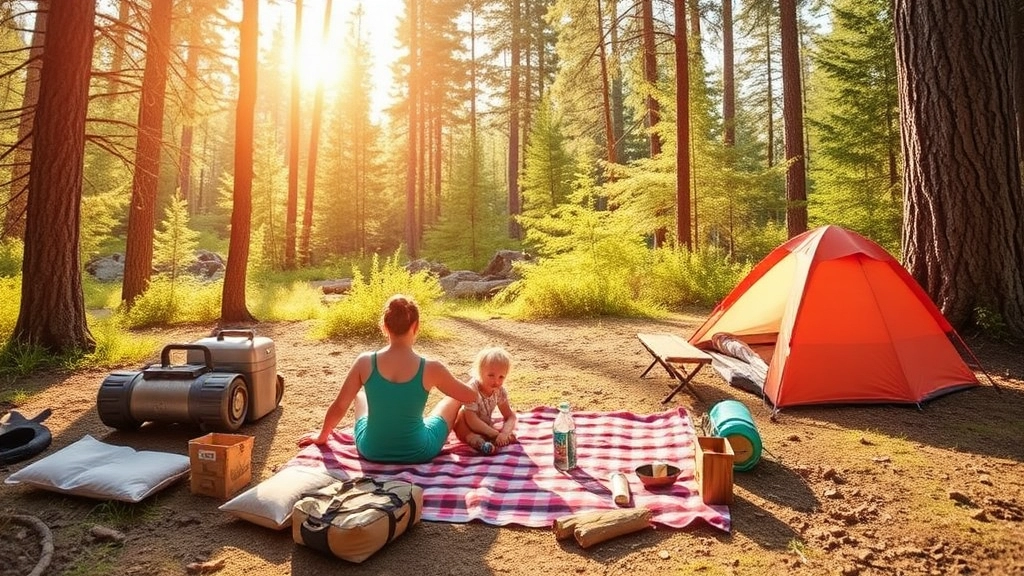Preparing for Summer Camp
When it comes to preparing for summer camp, having the right gear can make all the difference. From clothing essentials to outdoor gear, knowing what to pack ensures a smooth and enjoyable experience. In this guide, I’ll walk you through the must-have items for your summer camp adventure, covering everything from personal hygiene to fun and entertainment. Let’s dive into the things you need for summer camp to make your packing process a breeze.
Essential Packing List
First on the list is clothing. Pack enough T-shirts, shorts, and underwear to last the duration of the camp, plus a couple of extra sets for unexpected messes. Don’t forget a warm jumper or jacket for cooler evenings. Footwear is equally important; bring comfortable trainers for activities and a pair of sandals or flip-flops for downtime.
Personal Hygiene and Safety
Personal hygiene items like toothbrushes, toothpaste, and soap are non-negotiable, and a compact first aid kit can be a real lifesaver.
Entertainment
Lastly, include some fun items like a camera or a book to keep entertained during downtime. With these essentials in your bag, you’re all set for a fantastic summer camp experience.
Clothing Essentials for Summer Camp
Heading off to summer camp soon? I bet you’re buzzing with excitement but also a tad worried about what to pack, right? Trust me, I’ve been there. You want to be prepared without lugging around a suitcase that weighs more than you do. So, let’s break it down.
Everyday Wear: Keep It Simple
First things first, clothing essentials for summer camp. You’re going to need everyday wear that’s comfy, durable, and easy to mix and match. Think:
- T-shirts: Pack a mix of short-sleeve and long-sleeve shirts. You’ll thank yourself for the long sleeves when the mosquitoes come out at dusk.
- Shorts and Trousers: Opt for breathable fabrics. Quick-dry materials are a godsend if you get caught in a rain shower or decide to take an impromptu swim.
- Underwear and Socks: Don’t skimp here. Pack enough to last the whole trip because laundry facilities might be non-existent or super basic.
Layer Up: Be Ready for Anything
Weather can be unpredictable, so layering is key. Here’s what you’ll need:
- Light Jacket or Hoodie: Perfect for those chilly mornings and evenings.
- Raincoat or Poncho: A must-have for sudden downpours. Trust me, no one likes being soaked to the bone.
- Warm Layers: Even in summer, nights can get cold. A fleece or thermal top can be a lifesaver.
Activity-Specific Clothing
Different activities call for different gear. Here’s a quick rundown:
- Swimwear: At least two sets. One can dry while you wear the other.
- Old Clothes: For messy activities like arts and crafts or mud hikes. You don’t want to ruin your favourite T-shirt.
- Sportswear: If your camp has specific sports, pack accordingly. Think gym shorts, sports bras, and breathable tops.
Footwear: Don’t Forget the Feet
We’ll dive deeper into footwear later, but for now, remember you’ll need:
- Hiking Boots or Sturdy Trainers: For all those adventures.
- Flip-Flops or Sandals: For casual wear and shower time.
Personal Touches: Make It Yours
Lastly, add a bit of your own flair. Whether it’s a funky hat, a favourite bandana, or some cool patches, make your camp wardrobe feel like you. After all, summer camp is about having fun and expressing yourself.
In a nutshell, packing the right clothing essentials for summer camp is all about being prepared for anything while keeping it light and easy.
For more guidance on what to bring, check out our summer camp packing essential tips and tricks. And if you’re still deciding on the perfect camp, don’t miss our top tips and destinations for family summer camps.
Footwear: What to Pack for Different Activities
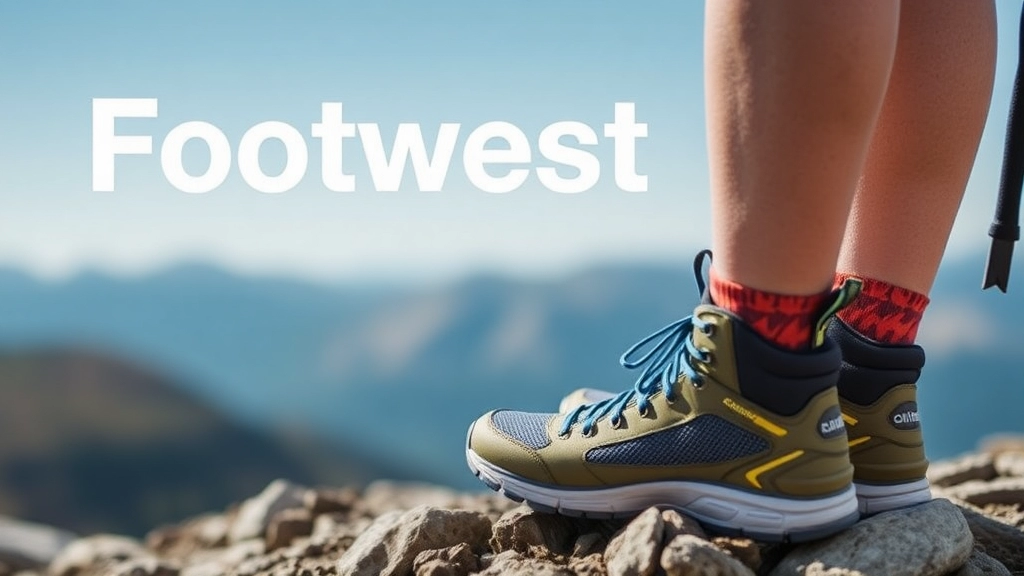
Ever found yourself at summer camp with the wrong shoes?
Yeah, me too.
It’s a nightmare.
Let’s make sure that doesn’t happen to you.
1. Hiking Boots
You’re going to need these.
Why?
Because trails can be brutal on your feet.
Look for:
- Sturdy soles for grip
- Ankle support to prevent sprains
- Waterproof material for those unexpected puddles
2. Trainers
For everyday activities.
You’ll be running, jumping, and probably playing a lot of games.
Best features:
- Comfortable fit – no blisters, please
- Breathable fabric – keep those feet cool
- Good cushioning – your feet will thank you
3. Sandals
Perfect for casual wear around the camp.
But not just any sandals.
Choose ones with:
- Straps that secure your feet
- Non-slip soles – safety first
- Quick-dry material – because wet feet are the worst
4. Water Shoes
If your camp has water activities, these are a must.
Look for:
- Drainage holes – no one likes soggy shoes
- Quick-drying fabric – for comfort
- Good grip – keep those slips and falls at bay
5. Flip-Flops
For the shower and quick trips to the loo.
Why?
- Easy to slip on and off
- Lightweight and packable
- Hygienic – keeps your feet off the questionable camp floor
Real Talk:
I once forgot my hiking boots and had to trek in trainers.
Blisters for days.
Don’t be me.
Quick Tips:
- Break in new shoes before camp
- Pack extra socks – trust me
- Check the camp’s activity list – know what you’re in for
Personal Hygiene and Toiletries for Camp
Alright, let’s talk about personal hygiene and toiletries for camp. You don’t want to be that person who forgets the essentials and ends up borrowing from everyone else, right? So, what exactly do you need to pack to stay fresh and clean while you’re out in the wild?
The Basics: What You Can’t Forget
First things first, you need to cover the basics. Here’s a list of essentials you absolutely can’t leave behind:
- Toothbrush and Toothpaste: Nobody wants to deal with bad breath, especially when you’re in close quarters.
- Shampoo and Conditioner: Travel-sized bottles are your best friend here. Keep your hair clean without lugging around full-sized bottles.
- Soap or Body Wash: A good bar of soap or a small bottle of body wash will keep you feeling fresh.
- Deodorant: This is non-negotiable. Camp activities can make you sweat, and you don’t want to stink up the place.
- Towel: A quick-dry towel is ideal. It saves space and dries faster than a regular towel.
Extra Essentials: Don’t Overlook These
Now, let’s get into some items that might not be on your radar but are equally important:
- Wet Wipes: Perfect for a quick clean-up when you can’t shower.
- Hand Sanitiser: Keep those germs at bay, especially before meals.
- Feminine Hygiene Products: Ladies, don’t forget to pack enough for the entire trip.
- Razor and Shaving Cream: If you prefer to stay smooth, these are a must.
- Lip Balm: The sun and wind can dry out your lips, so keep them moisturised.
Real Talk: Lessons from the Field
I remember my first summer camp experience. I thought I had everything until I realised I forgot my shampoo. Let me tell you, borrowing shampoo from five different people over a week is not fun. Plus, everyone has different types, and my hair was a mess. Lesson learned: Always double-check your toiletries.
Pro Tips: Making It Easy
Here are some pro tips to make your packing a breeze:
- Use a Toiletry Bag: Keeps everything organised and easy to find.
- Label Your Items: Especially if you’re sharing a cabin. You don’t want your stuff mixed up with someone else’s.
- Pack Travel-Sized Items: Saves space and weight. You can always refill if needed.
- Ziplock Bags: Prevent leaks by packing liquid items in Ziplock bags.
For more tips on staying prepared, check out our summer camp transportation guide and learn how to make your camp experience even smoother. Additionally, if you’re curious about the various activities you can enjoy, explore our summer camp schedule and activities guide.
Outdoor Gear: Tools and Accessories for Adventure

Planning a summer camp adventure?
You might be asking yourself, “What outdoor gear do I really need?”
Here’s the lowdown.
Must-Have Tools
First off, let’s talk tools.
A good multi-tool is your best mate.
Think Swiss Army knife.
Why?
Because you never know when you’ll need to cut a rope, open a can, or fix something on the fly.
Navigation Essentials
Next up, navigation.
A compass and a map are non-negotiable.
Sure, your phone has GPS, but what happens when the battery dies?
Staying Hydrated
Hydration is key.
A durable water bottle or a hydration pack will keep you going.
Trust me, dehydration is no joke.
Lighting the Way
You’ll need a headlamp or a flashlight.
Ever tried setting up a tent in the dark?
Not fun.
Keeping Warm
Even in summer, nights can get chilly.
A lightweight jacket or fleece will save you from freezing.
Stories from the Trail
I remember my first camp.
Forgot my multi-tool.
Had to borrow one just to open a can of beans.
Lesson learned.
Safety First
Don’t forget a first aid kit.
Accidents happen, and a well-stocked kit can make all the difference.
Extra Accessories
- Duct tape: Fixes almost anything.
- Paracord: Useful for tying things up.
- Whistle: For emergencies.
Bedding and Sleep Comfort: Sleeping Bags, Pillows, and More
Alright, let’s talk about something everyone worries about when heading to summer camp: bedding and sleep comfort. How do you make sure you get a good night’s sleep in the great outdoors? Trust me, I’ve been there, and I know the struggle is real. So, let’s break it down, shall we?
The Basics: Sleeping Bags
First things first, you need a solid sleeping bag. But not just any sleeping bagâone that suits the summer camp environment. Here’s what you should look for:
- Temperature Rating: Ensure your sleeping bag is rated for the temperatures you’ll be facing. Summer camps can still get chilly at night.
- Material: Go for something lightweight and breathable. Synthetic materials are usually a good bet.
- Size and Weight: Make sure it’s easy to carry but roomy enough for you to sleep comfortably.
Pillows: The Unsung Heroes
Don’t underestimate the power of a good pillow. Seriously, your neck will thank you. Here are a few options:
- Inflatable Pillows: Easy to pack and adjust for your comfort.
- Compressible Pillows: These are filled with foam or down and can be squished into a small size for packing.
- DIY Options: If you’re really tight on space, you can always stuff a pillowcase with clothes.
Sleeping Pads and Mats
Sleeping directly on the ground? Not ideal. A sleeping pad or mat can make a world of difference. Here’s what to consider:
- Foam Pads: Lightweight and durable, but can be bulky.
- Inflatable Pads: More comfortable and packable, but you have to blow them up.
- Self-Inflating Pads: A mix of foam and air, offering good comfort and insulation.
Extra Comfort Items
If you want to go the extra mile for a good night’s sleep, consider these add-ons:
- Blankets: A lightweight, packable blanket can add extra warmth.
- Sleeping Bag Liners: These can add warmth and keep your sleeping bag cleaner.
- Earplugs and Eye Masks: Campsites can be noisy and bright, so these can help you get some shut-eye.
Real Talk: My Experience
I remember my first summer camp. I thought I could just wing it with a basic sleeping bag. Big mistake. I ended up shivering through the night and waking up with a stiff neck. After that, I invested in a good sleeping pad and an inflatable pillow. Game changer. I slept like a baby and actually enjoyed my days because I wasn’t exhausted.
Packing Tips for Bedding
- Roll, Don’t Fold: Rolling your sleeping bag and pad saves space.
- Use Compression Sacks: These can significantly reduce the bulk of your sleeping bag.
- Keep Essentials Handy: Make sure your pillow and any extra blankets are easily accessible.
If you’re looking for more tips on preparing for camp, check out our essential packing tips and tricks. And for those last-minute activity ideas, our guide to last-day activities is a must-read!
Water-Based Activities: Swim Gear and Towels
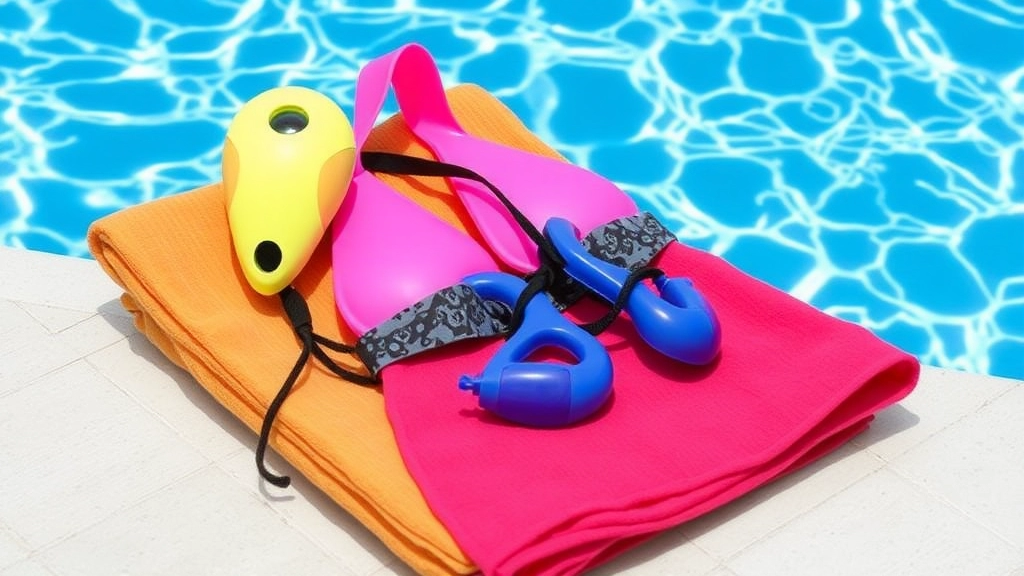
Ever been to a summer camp and realised you forgot your swim gear? Yeah, it’s a nightmare.
Let’s make sure that doesn’t happen.
Essential Swim Gear
First things first, swimwear.
Pack at least two swimsuits.
One for the pool, one for the lake.
You never know when you’ll get the chance to dive in.
Goggles are next.
Trust me, you don’t want to be the one squinting underwater.
Get a pair that fits well and doesn’t fog up.
Towels: More Important Than You Think
You’ll need more than one towel.
A quick-dry towel is a lifesaver.
It dries fast and doesn’t take up much space.
But also pack a beach towel.
Something big and comfy for lounging by the water.
Water Shoes: Protect Those Feet
Ever stepped on a sharp rock or a slippery dock?
Not fun.
Water shoes offer protection and grip.
Perfect for rocky lakes or slippery poolsides.
Waterproof Bag: Keep Your Stuff Dry
A waterproof bag is essential.
Throw in your towel, sunscreen, and a change of clothes.
Keeps everything dry and organised.
Sunscreen: Don’t Skip It
Water reflects sunlight.
You’ll burn faster than you think.
Waterproof sunscreen is a must.
Apply it generously and often.
Real Talk: Stories and Examples
Remember that time I forgot my towel?
Ended up using my T-shirt to dry off.
Not ideal.
Or the time my mate lost his goggles?
Spent the whole swim session with red, irritated eyes.
Don’t be that guy.
Quick Checklist
- Two swimsuits
- Goggles
- Quick-dry towel
- Beach towel
- Water shoes
- Waterproof bag
- Waterproof sunscreen
Staying Safe in the Sun: Sunscreen and Sun Protection Items
Alright, let’s get real for a sec. Who hasn’t been roasted by the sun because they forgot to pack sunscreen? I mean, we’ve all been there, right? But when you’re at summer camp, staying safe in the sun isn’t just about avoiding a painful sunburnâit’s about making sure you can actually enjoy your time without turning into a lobster. So, let’s dive into the essentials you need to pack to stay sun-safe and have a blast.
Sunscreen: Your Best Mate Against the Sun
First things first, you need a solid sunscreen. Not just any sunscreen, but one that’s going to protect you from both UVA and UVB rays. Here’s what you need to look for:
- SPF 30 or higher: Anything less is just not going to cut it.
- Broad-spectrum: This means it protects against both UVA and UVB rays.
- Water-resistant: Because you’re going to sweat, swim, and probably get caught in a water balloon fight.
Pro Tip: Apply your sunscreen 30 minutes before heading out and reapply every 2 hours. If you’re swimming or sweating a lot, reapply even more frequently.
Sun Protection Clothing: Cover Up Wisely
Now, sunscreen is great, but it’s not the only line of defence. You need some good sun protection clothing. Here’s the lowdown:
- Long-sleeve shirts: Lightweight, breathable, and preferably with UPF (Ultraviolet Protection Factor) fabric.
- Wide-brimmed hats: Baseball caps are cool, but they don’t cover your neck and ears. Go for a hat with a brim all around.
- Sunglasses: Make sure they have UV protection. Your eyes can get sunburned too!
Quick Story: Last summer, I saw this kid at camp who wore a long-sleeve rash guard every day. He was the only one who didn’t end up looking like a tomato by the end of the week. Smart kid.
Shade: Find or Create It
Sometimes, the best way to stay safe in the sun is to avoid it altogether. Here’s how to make that happen:
- Portable shade tents: These are great for setting up a base camp.
- Umbrellas: Perfect for the beach or lake days.
- Strategic breaks: Plan your activities to include breaks in the shade, especially during the peak sun hours (10 a.m. to 4 p.m.).
Hydrate, Hydrate, Hydrate
This might seem like a no-brainer, but staying hydrated is crucial. The sun can dehydrate you faster than you think. Always have a water bottle handy and drink regularly. Dehydration can sneak up on you and ruin your fun.
Lip Balm with SPF
Don’t forget your lips! They can get sunburned too. Pack a lip balm with SPF and reapply it just like you do with your sunscreen.
Extra Sunscreen for Backup
Always pack an extra bottle of sunscreen. Trust me, you don’t want to run out halfway through camp. Plus, you’ll be the hero who saves the day when someone else forgets theirs.
For more tips on staying safe and having fun, check out our bunk safety and design tips and learn about the types, benefits, and tips for summer camps.
Nighttime Essentials: Flashlights and Extra Batteries
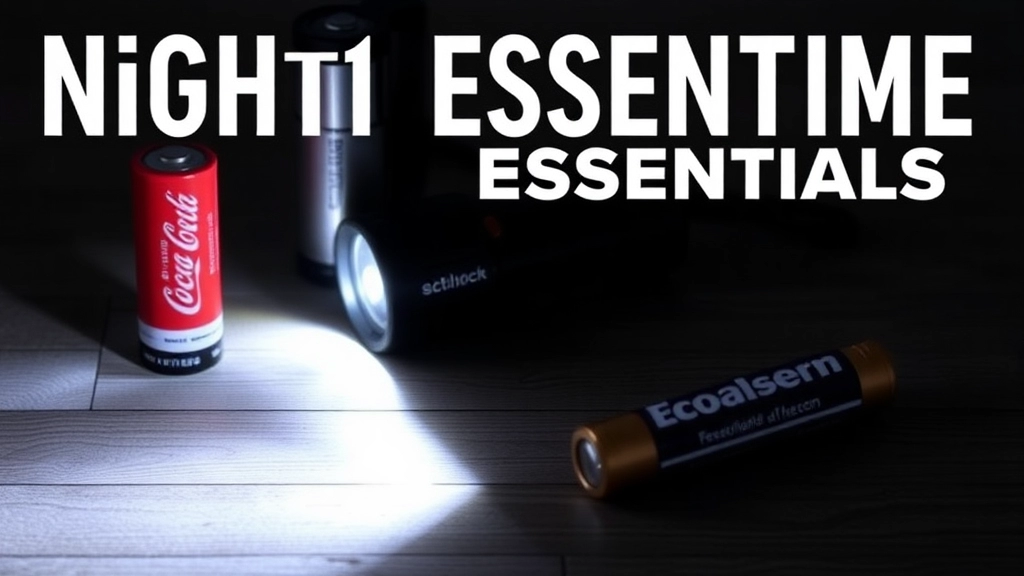
Ever been stuck in the middle of the woods, fumbling around in the dark?
Yeah, me too.
It’s a nightmare.
Nighttime at camp can be magical, but only if you’re prepared.
So, let’s talk about flashlights and extra batteries.
Why Flashlights Are Non-Negotiable
First things first, you need a flashlight.
Not your phone’s torch.
A real, sturdy flashlight.
Here’s why:
- Safety: You don’t want to trip over a root or wander into poison ivy.
- Navigation: Finding the loo in the dark is a mission without one.
- Emergencies: If something goes wrong, you need to see what you’re doing.
Choosing the Right Flashlight
Not all flashlights are created equal.
Here’s what to look for:
- Brightness: Aim for at least 100 lumens.
- Durability: Go for something water-resistant.
- Battery Life: Longer is better, obviously.
Extra Batteries: Your Backup Plan
Ever had your flashlight die on you?
It’s the worst.
Pack extra batteries.
Trust me.
Here’s a quick checklist:
- Type: Make sure they match your flashlight.
- Quantity: Bring at least two sets.
- Storage: Keep them in a waterproof bag.
Real Talk: My Campfire Story
Once, I thought I’d be fine with just one set of batteries.
Big mistake.
Halfway through the night, my flashlight went dark.
I ended up using my phone, which drained the battery.
Lesson learned.
Pro Tips to Keep You Covered
- Headlamp: Consider packing a headlamp as well. It keeps your hands free.
- Rechargeable Options: Some flashlights are USB rechargeable. Handy if you have a power bank.
- Glow Sticks: For a bit of fun and extra light, throw in a few glow sticks.
Rain Gear and Cold Weather Clothing for Unexpected Weather
Ever been caught in a sudden downpour or an unexpected cold snap while camping? Yeah, me too. It’s not fun. But hey, it’s all part of the adventure, right? Let’s dive into the essentials you need to pack to stay warm and dry when Mother Nature decides to surprise you.
Why Rain Gear and Cold Weather Clothing Matter
Imagine you’re out in the woods, miles from the nearest shelter, and the heavens open up. Or maybe the temperature drops unexpectedly, and you’re shivering in your summer shorts. Not having the right gear can turn a fun trip into a miserable experience. So, what should you pack to be prepared?
Must-Have Rain Gear
First things first, let’s talk about rain gear. You don’t need to lug around your entire wardrobe, but you do need a few key items:
- Waterproof Jacket: Go for something lightweight yet durable. A good waterproof jacket can be a lifesaver.
- Rain Pants: These are often overlooked but can keep you from getting soaked to the bone.
- Poncho: A poncho is great for quick protection and can also cover your backpack.
- Waterproof Boots: Wet feet are the worst. Make sure your boots are waterproof and comfortable.
- Dry Bags: Use these to keep your essentials like phone, wallet, and snacks dry.
Cold Weather Clothing Essentials
Now, let’s switch gears to cold weather clothing. Even in summer, nights can get chilly, and you don’t want to be caught off guard.
- Thermal Underwear: These are a game-changer. Lightweight but super warm.
- Fleece Jacket: Perfect for layering. It’s warm but breathable.
- Beanie and Gloves: Your extremities lose heat fast. Keep them covered.
- Warm Socks: Wool socks are your best bet. They keep your feet warm even if they get wet.
- Insulated Jacket: If you’re expecting really cold weather, an insulated jacket is a must.
Real-Life Example
I remember one camping trip where the forecast was all sunshine and rainbows. But, of course, the weather had other plans. A sudden storm hit, and the temperature dropped. Those who had packed rain gear and warm clothing were fine, but others were scrambling. One friend had to borrow a poncho and another ended up with soggy feet because they didn’t have waterproof boots. Lesson learned: always be prepared.
Quick Tips for Packing
- Layer Up: Layering is key. You can always take off layers if you’re too warm, but if you don’t have enough, you’re stuck.
- Weather Check: Always check the weather forecast, but pack for the unexpected.
- Compact and Lightweight: Go for gear that’s easy to pack and doesn’t take up much space.
For more tips on how to stay comfortable during your camping adventures, check out our guide on staying cool and comfortable. And if you’re planning a summer camp trip, don’t miss our essential packing tips and tricks to ensure you have everything you need.
Fun and Entertainment: Games, Cameras, and Books
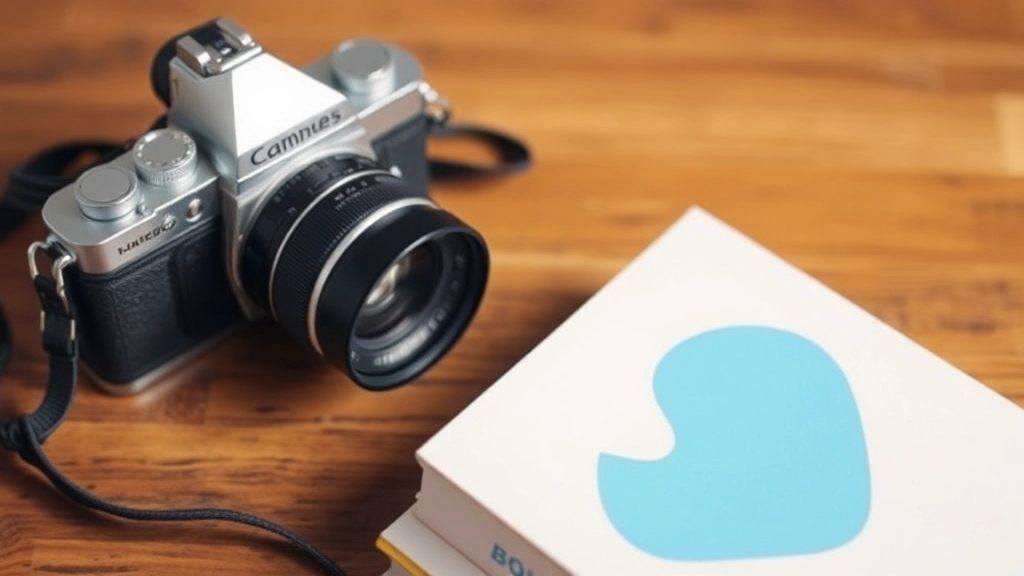
Ever wondered how to keep entertained at summer camp?
Let’s face it, camp isn’t just about activities and nature walks. Sometimes, you need a little extra to keep the fun going.
Here’s how you can make sure boredom never strikes.
Games: Solo and Group Fun
Whether it’s a rainy day or just some downtime, having a variety of games can be a lifesaver.
- Card Games: Think Uno, Go Fish, or a deck of standard playing cards. Small, portable, and endless fun.
- Board Games: Compact versions of classics like Monopoly or Scrabble can be great.
- Outdoor Games: Frisbees, footballs, or even a simple skipping rope can keep you and your mates entertained for hours.
Cameras: Capture the Memories
No one wants to forget those epic camp moments.
A good camera can help you capture every laugh, every adventure, and every beautiful sunset.
- Digital Cameras: Easy to use and great for high-quality photos.
- Disposable Cameras: Perfect for a bit of retro fun and no worries if they get lost.
- Smartphones: If allowed, they double up as cameras and even video recorders. Just remember to keep them safe!
Books: Your Best Friend in Quiet Moments
When you’re not up for games or snapping photos, a good book can be your best mate.
- Adventure Novels: Get in the camp spirit with stories of survival and exploration.
- Comics and Graphic Novels: Light, fun, and easy to read.
- Non-Fiction: Learn something new while you relax. Maybe a book on local wildlife?
Real Stories: What Worked for Me
I remember one summer camp where a simple deck of cards became the camp’s favourite.
Every evening, we’d gather around and play games until it was time for bed.
And the photos we took?
They still hang on my wall, reminding me of those unforgettable moments.
So, when you’re packing for camp, don’t just think about the essentials.
Think about the fun, the memories, and the stories you’ll want to tell.
Make sure you’ve got the games, cameras, and books to keep the good times rolling.
Health and Safety: First Aid Kits and Bug Repellent
Ever found yourself at summer camp, miles away from civilisation, and realised you’ve got a nasty cut or a swarm of mozzies attacking you? Yeah, not fun. That’s why first aid kits and bug repellent are absolute lifesavers. Let’s get into the nitty-gritty of what you need to stay safe and healthy at camp.
Why You Need a First Aid Kit
Imagine you’re out hiking, you trip, and suddenly you’ve got a bleeding knee. Or maybe you’re just chilling by the campfire and someone gets a burn. First aid kits are your best mate in these situations. Here’s what you should have in your kit:
- Bandages and Plasters: For those minor cuts and scrapes.
- Antiseptic Wipes: Clean wounds to avoid infections.
- Gauze Pads and Medical Tape: For larger cuts and injuries.
- Pain Relievers: Think paracetamol or ibuprofen.
- Tweezers: Handy for splinters or ticks.
- Burn Cream: You never know when someone might get too close to the campfire.
- Scissors: For cutting tape or gauze.
- Instant Cold Packs: Great for sprains or bumps.
- Allergy Medication: In case someone has an unexpected reaction.
Bug Repellent: Your Shield Against Pests
Nothing ruins a good camping trip like being eaten alive by insects. Bug repellent is your go-to for keeping those pests at bay. Here’s what to look for:
- DEET-Based Repellents: Strong and effective, but use sparingly.
- Natural Alternatives: Like citronella or eucalyptus oil, if you prefer a chemical-free option.
- Bug-Repellent Clothing: Some clothes come pre-treated with insect repellent. Handy, right?
- Mosquito Nets: If you’re in a mozzie-heavy area, these are a lifesaver for sleeping.
Real Talk: Stories from the Campfire
I remember this one time at camp, my mate Dave forgot his bug repellent. By the end of the first night, he looked like he’d been through a war zoneâcovered in bites and itching like mad. We ended up doing a late-night run to borrow some from another group. Lesson learned: never underestimate the power of bug spray.
Extra Tips for Health and Safety
- Hydration: Always have a water bottle handy. Dehydration can sneak up on you.
- Sun Protection: Sunscreen, hats, and sunglasses are a must.
- Food Safety: Keep your food sealed and stored properly to avoid attracting wildlife.
- Emergency Contacts: Always have a list of emergency numbers, just in case.
Packing a solid first aid kit and bug repellent ensures you’re prepared for whatever comes your way. Trust me, you don’t want to be the one caught off guard. Keep it simple, keep it smart, and you’re golden. For more tips on what to bring, check out our Ultimate Packing Guide. And if you’re curious about some fun activities to keep you entertained, don’t miss our Top Activities and Choices.
Packing Tips: Organising and Minimising Luggage
Alright, let’s talk about packing for summer camp.
Ever looked at your luggage and thought, “How on earth am I going to fit everything in here?”
Yeah, me too.
Packing can be a real headache, but it doesn’t have to be.
Here’s how to make it a breeze.
Start with a List
First things first, you need a list.
- Essentials only: Don’t pack your whole wardrobe.
- Categorise: Clothes, footwear, toiletries, outdoor gear, and so on.
Roll, Don’t Fold
Rolling your clothes saves space and reduces wrinkles.
- T-shirts, shorts, and pyjamas: Roll them up.
- Bulky items: Roll and tuck them into corners.
Use Packing Cubes
These little gems are game-changers.
- Organise by category: Keep similar items together.
- Easy access: No more digging through your bag.
Dual-Purpose Items
Pack items that serve more than one purpose.
- Convertible trousers: Trousers that turn into shorts.
- Sarong: Can be a towel, blanket, or even a dress.
Toiletries: Go Mini
Full-sized bottles? Forget it.
- Travel-sized: Shampoo, conditioner, and body wash.
- Solid options: Shampoo bars and soap bars.
Layer Up
Instead of packing heavy items, layer up.
- Base layers: Light and easy to pack.
- Outer layers: A good jacket or fleece.
Shoes: Be Picky
Shoes take up a lot of space.
- One pair for activities: Trainers or hiking boots.
- One pair for downtime: Flip flops or sandals.
Pack Smart, Not Hard
Don’t cram everything in one go.
- Strategic packing: Heavy items at the bottom, lighter ones on top.
- Fill gaps: Socks and underwear can fill small spaces.
Personal Touch
Add a bit of you to the packing process.
- Favourite book or game: Something for downtime.
- Photos or mementos: A touch of home.
Final Check
Before you zip up, do a final check.
- Double-check your list: Make sure you’ve got everything.
- Weigh your bag: Keep it manageable.
Real Talk
Remember that time I packed my entire bookshelf for a weekend trip?
Yeah, don’t do that.
Keep it simple, keep it light.
Packing doesn’t have to be a nightmare.
With these tips, you’ll be a packing pro in no time.
And hey, less luggage means more room for adventure.
Happy packing!
If you’re looking for more comprehensive tips on camp preparation, check out our complete guide for summer camp counselors. And don’t forget to explore the daily drop-in summer camp activities to make the most out of your camp experience.
FAQs: Things You Need For Summer Camp
What types of footwear should I pack for summer camp?
You’ll need a variety of shoes for different activities. Pack hiking boots for trails, trainers for everyday activities, sandals for casual wear, water shoes for water activities, and flip-flops for showers and quick trips.
Why are hiking boots essential for summer camp?
Hiking boots are necessary because trails can be tough on your feet. Look for sturdy soles, ankle support, and waterproof material to ensure comfort and safety.
What outdoor gear is a must-have for summer camp?
Essential outdoor gear includes a multi-tool like a Swiss Army knife, a compass and map for navigation, a durable water bottle or hydration pack, and a headlamp or flashlight. Don’t forget a first aid kit and extra accessories like duct tape, paracord, and a whistle.
How can I stay hydrated during summer camp?
Hydration is crucial. Carry a durable water bottle or a hydration pack to ensure you have enough water throughout the day.
What swim gear should I bring for water-based activities?
Pack at least two swimsuits, goggles, a quick-dry towel, a beach towel, and water shoes. Also, bring a waterproof bag and waterproof sunscreen to keep your belongings dry and protect your skin.
Why is a flashlight important for nighttime at camp?
A flashlight is essential for safety, navigation, and emergencies. Look for one with at least 100 lumens, durability, and long battery life. Don’t forget to pack extra batteries.
What games and entertainment should I bring to summer camp?
Bring a variety of games like card games (Uno, Go Fish), compact board games (Monopoly, Scrabble), and outdoor games (Frisbees, footballs). Also, consider packing a camera to capture memories and books for quiet moments.
How can I capture memories during summer camp?
Bring a digital camera, disposable camera, or use your smartphone if allowed. These tools will help you capture every memorable moment and adventure.
What should I look for in a good book to bring to camp?
Choose books that match your interests. Adventure novels, comics, graphic novels, and non-fiction books about local wildlife can be great options to keep you entertained during downtime.
Any tips for packing footwear for summer camp?
Make sure to break in new shoes before camp, pack extra socks, and check the camp’s activity list to know what type of footwear you’ll need.
What are some additional accessories I should consider bringing?
Consider packing a headlamp for hands-free lighting, rechargeable flashlights with USB options, and fun items like glow sticks for extra light and entertainment.
References
-
How to Choose Hiking Boots
-
Best Trail Running Shoes of 2024
-
Best Water Shoes of 2024

